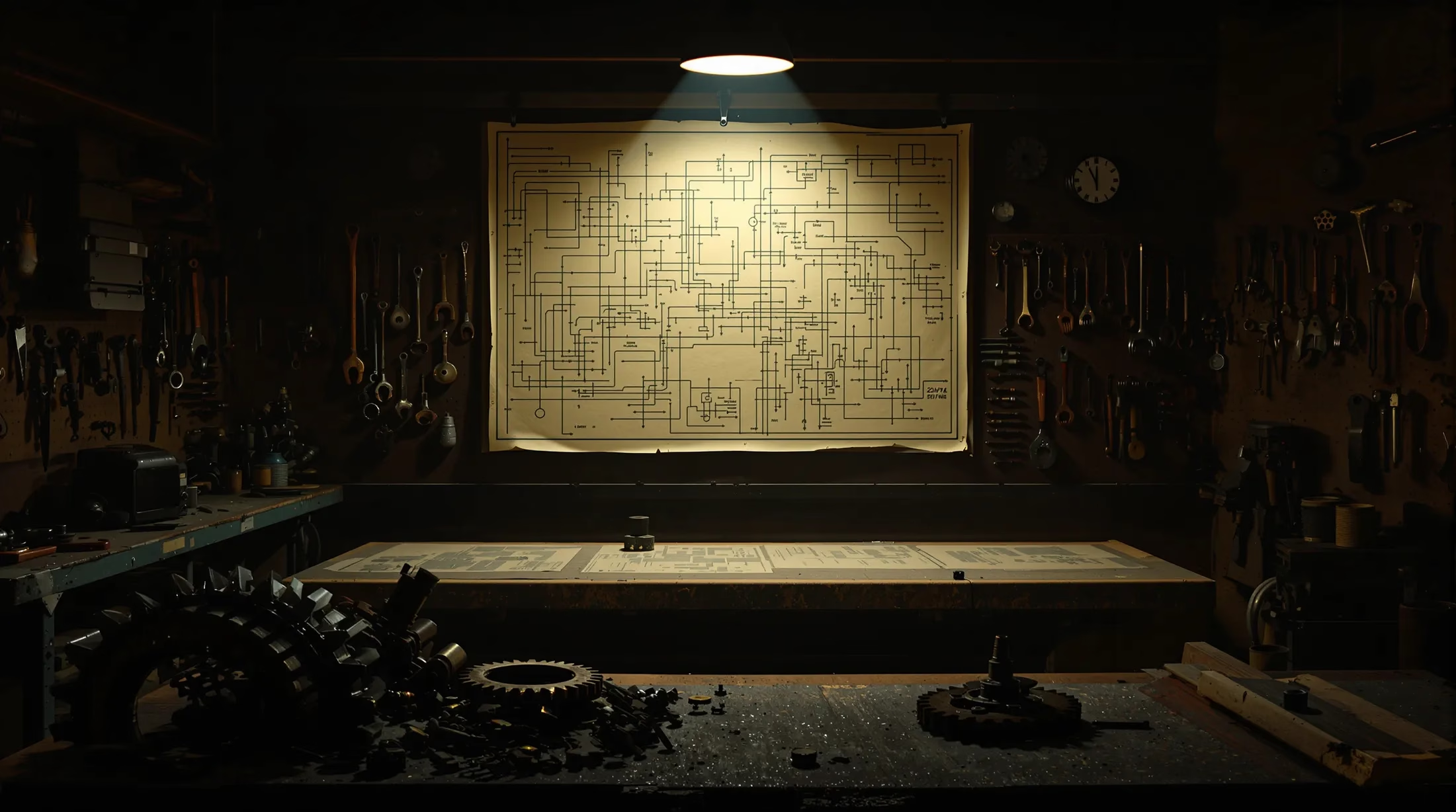Discover how lean manufacturing is revolutionizing modern production systems by maximizing value while minimizing waste. This comprehensive guide explores the principles, history, and practical applications of lean methodology that continues to transform industries worldwide.
Understanding Lean Manufacturing
Lean manufacturing represents a revolutionary approach to production that prioritizes value creation while systematically eliminating waste. This methodology focuses on optimizing the entire production system by reducing unnecessary processes, minimizing waiting times, and streamlining workflows to deliver maximum value to customers. Rather than simply accelerating existing processes, lean thinking fundamentally reimagines how value flows through an organization.
At its core, lean manufacturing views any resource expenditure that doesn’t directly contribute to customer value as wasteful and targets it for elimination. This customer-centric philosophy drives organizations to critically examine every aspect of their operations, from supply chain management to production floor activities, identifying opportunities to enhance efficiency while maintaining or improving quality standards.
What is Lean Manufacturing?
Lean manufacturing is a comprehensive production methodology that aims to create maximum value while consuming minimum resources. The approach centers on identifying and eliminating eight types of waste:
- Defects in products
- Overproduction beyond demand
- Waiting time between processes
- Non-utilized talent
- Transportation inefficiencies
- Inventory excess
- Unnecessary motion
- Excess processing
The lean philosophy emphasizes creating smooth, continuous flow throughout the production process. Unlike traditional batch-and-queue manufacturing, which often results in bottlenecks and excessive inventory, lean systems strive for perfect synchronization between different production stages. This enables companies to reduce lead times, decrease in-process inventory, and respond more quickly to changing market conditions—all while maintaining consistent quality and reducing operational costs.
History and Evolution of Lean Manufacturing
The roots of lean manufacturing can be traced back to post-World War II Japan, where Toyota Motor Corporation developed what would later become known as the Toyota Production System (TPS). Faced with resource constraints and fierce competition, Toyota engineers Taiichi Ohno and Shigeo Shingo created a system that could produce high-quality vehicles efficiently with limited resources. Their innovations included just-in-time inventory management, built-in quality controls, and standardized work processes—all fundamental concepts in modern lean thinking.
While Toyota pioneered these practices in the 1950s and 1960s, the term „lean manufacturing” itself wasn’t coined until 1988, when researchers from MIT’s International Motor Vehicle Program described Toyota’s approach in their book „The Machine That Changed the World.” Since then, lean principles have evolved beyond automotive manufacturing to transform industries ranging from healthcare and construction to software development and service operations. Today’s lean methodologies incorporate digital technologies and data analytics, creating more responsive and adaptable systems while remaining true to the core philosophy of maximizing value and minimizing waste.
Core Principles of Lean Manufacturing
Lean manufacturing revolves around a set of fundamental principles that collectively form a powerful framework for operational excellence. At its essence, lean methodology seeks to maximize customer value while minimizing resource consumption through systematic waste elimination. The approach transforms how organizations perceive their operations, shifting from isolated process improvements to comprehensive value stream optimization.
The Five Principles of Lean
| Principle |
Description |
| Value |
Define value from customer’s perspective, focusing on what customers will pay for |
| Value Stream |
Map the entire product journey from concept to customer |
| Flow |
Create continuous movement of products through the value stream |
| Pull |
Produce only what customers demand when they demand it |
| Perfection |
Continuously improve processes through systematic problem solving |
The Role of Waste Reduction
Waste reduction stands as the cornerstone of lean manufacturing philosophy. The methodology identifies eight distinct types of waste (sometimes called „muda”) that impede operational excellence. By systematically targeting these inefficiencies, organizations can dramatically improve resource utilization and productivity without compromising quality or customer satisfaction.
Effective waste reduction requires both analytical rigor and cultural change. Organizations must develop systems to identify waste through direct observation and data analysis, then implement targeted countermeasures to eliminate root causes rather than symptoms. Companies that excel at waste elimination typically achieve 15-30% productivity improvements while simultaneously reducing lead times, inventory levels, and quality issues—creating a powerful competitive advantage in their markets.
Continuous Improvement in Lean
„Kaizen,” the lean terminology for continuous improvement, serves as the driving force behind lean organizations. Unlike traditional approaches that rely on occasional breakthrough changes, Kaizen focuses on implementing small, incremental improvements consistently over time. This methodology emphasizes that excellence emerges from the collective impact of numerous minor enhancements across all organizational levels rather than single transformative initiatives.
- Systematic problem-solving processes
- Employee training in improvement methodologies
- Performance metrics identification
- Resource allocation for improvement activities
- Recognition of employee contributions
- Leadership participation in the process
The most successful organizations implement daily management systems where teams regularly review performance metrics, identify deviations, and execute countermeasures. This creates a self-sustaining improvement cycle that delivers measurable results. Research shows that organizations with mature continuous improvement systems typically achieve 3-5% annual productivity gains while simultaneously enhancing quality, reducing costs, and boosting employee engagement.
Key Tools and Techniques in Lean Manufacturing
Lean manufacturing employs a comprehensive toolkit that enables organizations to systematically identify waste, optimize workflows, and enhance value creation. These tools provide practical methods for implementing lean principles across all operational areas, addressing workplace organization, production flow, quality management, and continuous improvement initiatives.
The most effective implementations utilize these tools as part of an integrated system rather than isolated interventions. Organizations typically establish foundational techniques for stability and standardization before advancing to more sophisticated applications. When properly deployed, these tools transform abstract lean concepts into tangible business results, delivering measurable improvements in productivity, quality, lead times, and cost reduction.
Introduction to Lean Tools
| Tool |
Purpose |
| Value Stream Mapping |
Visualizing entire processes and workflows |
| Kanban Systems |
Controlling inventory and production flow |
| Andon Signals |
Real-time problem notification |
| Five Whys |
Root cause analysis technique |
Selecting appropriate lean tools requires understanding both the specific challenge and how different techniques complement each other. Many organizations begin with 5S workplace organization before implementing more complex systems like Cellular Manufacturing or Single-Minute Exchange of Die (SMED). The true power emerges when these tools operate within a cohesive strategic framework aligned with organizational goals.
Understanding the 5S Methodology
- Seiri (Sort) – eliminate unnecessary items
- Seiton (Set in order) – organize remaining items for optimal workflow
- Seiso (Shine) – clean workspace thoroughly
- Seiketsu (Standardize) – establish standard procedures
- Shitsuke (Sustain) – maintain improvements through discipline
When properly implemented, 5S delivers benefits beyond simple organization. Organizations experience significant productivity gains as workers spend less time searching for tools and materials. Safety improves through clear pathways and properly stored equipment. Quality increases through better organization that helps identify abnormalities earlier. Most importantly, 5S creates the foundational stability required for implementing advanced lean tools while developing employee engagement in the improvement process.
Just-in-Time Production Explained
Just-in-Time (JIT) production represents a fundamental shift in operational flow management. Unlike traditional batch production based on forecasts, JIT delivers exactly what is needed, when needed, and in the exact quantity needed. This approach synchronizes production directly with customer demand, creating a pull system where downstream processes signal upstream operations through Kanban cards or electronic signals.
JIT implementation yields multiple organizational benefits:
- Dramatic reductions in inventory carrying costs
- Shortened production lead times
- Enhanced quality through immediate problem visibility
- Improved space utilization
- Strengthened cash flow through reduced working capital
Successful JIT implementation requires stable processes, reliable suppliers, flexible workforce capabilities, and effective visual management systems. Organizations typically implement JIT gradually, starting with internal operations before extending to supplier relationships, as the approach demands considerable discipline and process stability.
Benefits of Implementing Lean Manufacturing
Increased Efficiency and Productivity
Lean manufacturing enhances operational efficiency through systematic elimination of non-value-adding activities in production processes. Organizations implementing lean principles typically achieve 15-30% productivity improvements within the first year through:
- Streamlined workflows and processes
- Minimized waiting times
- Optimized resource allocation
- Enhanced throughput speed
- Reduced work-in-progress inventory
Cellular manufacturing arrangements, a cornerstone of lean methodology, create focused work cells capable of producing high-volume, high-variety products with exceptional speed. These optimized workstations can reduce manufacturing lead times by up to 90% while enabling rapid response to changing customer demands.
Cost Reduction and Profitability
| Financial Benefit |
Typical Impact |
| Inventory Carrying Costs |
20-30% reduction |
| Profit Margin Improvement |
5-15% increase |
| Working Capital Requirements |
Significant reduction |
The financial impact extends beyond direct cost savings through Just-In-Time manufacturing systems, creating a sustainable cycle of cost reduction and margin enhancement. Organizations experience improved cash flow and strengthened long-term financial performance through continuous identification of waste elimination opportunities.
Enhanced Quality and Customer Satisfaction
Lean manufacturing transforms quality outcomes by embedding error detection and prevention throughout the production process. This built-in quality approach delivers:
- 50% or greater reduction in defect rates
- Enhanced product uniformity and consistency
- 95% or higher on-time delivery performance
- Improved customer response flexibility
- Stronger customer relationships and loyalty
These quality improvements directly translate to higher customer satisfaction through reduced wait times and improved reliability. The continuous flow characteristic enables greater flexibility in accommodating varying order quantities and specifications, creating sustainable competitive advantage in crowded marketplaces.
Challenges and Considerations in Lean Implementation
The transition to lean manufacturing requires fundamental shifts in organizational structure, processes, and culture. With 70% of lean initiatives failing to deliver expected outcomes, organizations must recognize implementation challenges extend beyond technical aspects to include cultural and strategic considerations.
Common Challenges in Lean Implementation
- Cultural Resistance – employee and management perception of threats to job security
- Technical Expertise – lack of internal knowledge for proper tool implementation
- Supply Chain Integration – coordination challenges with suppliers and customers
- Financial Barriers – difficulty in quantifying benefits beyond direct cost savings
- Sustainability Issues – treating lean as temporary rather than permanent operating system
Organizations must simultaneously address technical systems, management infrastructure, and employee mindsets to create sustainable change. Success requires careful planning, executive commitment, and persistent effort over years rather than months, with comprehensive strategies addressing both technical and cultural aspects of transformation.
Strategies for Successful Lean Adoption
Effective lean implementation begins with leadership alignment and commitment. Senior executives must demonstrate visible support for lean principles through their actions, decisions, and resource allocation. This leadership engagement signals organizational commitment and helps overcome initial resistance.
- Clear Implementation Roadmap – structured approach with realistic timelines and measurable objectives
- Comprehensive Training – developing lean expertise across all organizational levels
- Pilot Projects – generating early wins to demonstrate value and build momentum
- Robust Measurement Systems – tracking progress and quantifying benefits
- Management Integration – embedding lean principles into daily routines and processes
| Implementation Component |
Success Criteria |
| Leadership Support |
Visible commitment and resource allocation |
| Training Programs |
All-level participation and skill development |
| Performance Metrics |
Clear KPIs and progress tracking systems |
| Sustainability Measures |
Integration into standard management processes |
When lean becomes embedded in performance evaluation systems and strategic planning processes, it transforms from an initiative into an organizational operating system. This integration creates lasting change that delivers sustained competitive advantage through continuous improvement and waste elimination.









